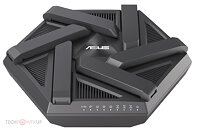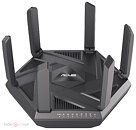TheLostSwede
News Editor
- Joined
- Nov 11, 2004
- Messages
- 18,469 (2.47/day)
- Location
- Sweden
| System Name | Overlord Mk MLI |
|---|---|
| Processor | AMD Ryzen 7 7800X3D |
| Motherboard | Gigabyte X670E Aorus Master |
| Cooling | Noctua NH-D15 SE with offsets |
| Memory | 32GB Team T-Create Expert DDR5 6000 MHz @ CL30-34-34-68 |
| Video Card(s) | Gainward GeForce RTX 4080 Phantom GS |
| Storage | 1TB Solidigm P44 Pro, 2 TB Corsair MP600 Pro, 2TB Kingston KC3000 |
| Display(s) | Acer XV272K LVbmiipruzx 4K@160Hz |
| Case | Fractal Design Torrent Compact |
| Audio Device(s) | Corsair Virtuoso SE |
| Power Supply | be quiet! Pure Power 12 M 850 W |
| Mouse | Logitech G502 Lightspeed |
| Keyboard | Corsair K70 Max |
| Software | Windows 10 Pro |
| Benchmark Scores | https://valid.x86.fr/yfsd9w |
As Computex is a hybrid event this year, a lot of companies are showing off their products online and ASUS has shared a whole host of upcoming products. One that caught our eye was the upcoming RT-AXE7800 router, mostly because it resembles a boxy version of a German kaisersemmeln or kaiser roll when the antennas are folded down. Unfortunately, ASUS didn't share too many details about the RT-AXE7800, but it's a tri-band WiFi 6E router and ASUS claims that it supports wireless speeds up to 7800 Mbps, hence the model name. It supports 160 MHz wide channels, although this is pretty common in WiFi 6E routers, as is the 1024-QAM support and the 6 GHz band that ASUS shared that the router will support.
What we can tell from the pictures, is that it'll have a single 2.5 Gbps port that can be used as either a WAN or a LAN port, as well as four Gigabit Ethernet ports, of which one can be a WAN port, or it can be teamed with a second Gigabit port. Keep in mind that teaming doesn't actually give you double the bandwidth to a single client, it requires multiple clients to offer any kind of advantage, as well as a managed switch, alternatively a NAS or a server that supports teaming. Around the back there's a single USB 3.0 port and this is also where the power connector is located. It obviously has six foldable antennas and we'd expect to see more similar designs in the future, as consumer routers with supports for the WiFi channels in the 6 GHz band aren't allowed to have removable antennas. This will also apply to WiFi 7 routers, as it's a regulatory requirement.



View at TechPowerUp Main Site | Source
What we can tell from the pictures, is that it'll have a single 2.5 Gbps port that can be used as either a WAN or a LAN port, as well as four Gigabit Ethernet ports, of which one can be a WAN port, or it can be teamed with a second Gigabit port. Keep in mind that teaming doesn't actually give you double the bandwidth to a single client, it requires multiple clients to offer any kind of advantage, as well as a managed switch, alternatively a NAS or a server that supports teaming. Around the back there's a single USB 3.0 port and this is also where the power connector is located. It obviously has six foldable antennas and we'd expect to see more similar designs in the future, as consumer routers with supports for the WiFi channels in the 6 GHz band aren't allowed to have removable antennas. This will also apply to WiFi 7 routers, as it's a regulatory requirement.



View at TechPowerUp Main Site | Source






